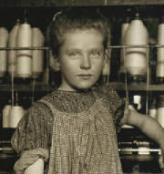The United States Department of Education website for Massachusetts claims that "every day we learn what works so students can make greater progress" learning reading and mathematics. They offer statistics on the number of schools making adequate yearly progress, schools in need of improvement and schools that are in the middle of restructuring, all compared to schools in the greater United States. While it is beneficial to track and chart where Massachusetts students are among the nation’s students in terms of standards and assessments, it is time for us to look at the structure of how we educate our educators before we can really look at making a difference in our students.
America has never had more diverse education with new charter schools, magnet schools, therapeutic schools and home schooling. Institutions such as museums, historical societies and libraries must begin by bridging the gap between humanities resources and the communities they serve: start with schools and teachers! And teachers have more than enough on their plates with MCAS, full classrooms and increasing requirements each year. We do not need more teacher-training; teachers are trained enough with the requirements schools place on them. If humanities institutions could develop age-appropriate teaching materials, standards-based curriculum teaching materials, educational web sites, and provide partnerships and collaborative programs that provide teachers easily accessible and time saving resources, we can begin to bridge the gap.
Multi-day workshops are one example of how to advance creativity in the classroom. Local educational and historical institutions offer workshops on Documenting Our Lives, History Around Us, The Importance of Preserving Documents, Incorporating Local History into Your Lesson Plans, Immigration and Migration, Architecture, and The Story of Silk. Educators of all levels can incorporate these experiences and resources into reading and early reading initiatives, special education, English language initiatives and MCAS standard curricula. For example, an afternoon workshop where Elizabeth Winthrop, author of Counting on Grace, will discuss how she found "Addie" the young girl in Lewis Hine’s photograph, will be available to educators at a discounted price at Wistariahurst Museum in October. Educators can take opportunities such as these to delve further into a certain topic and in this case, learn how to integrate the book into classroom activities focused on reading, social studies and literature.
discuss how she found "Addie" the young girl in Lewis Hine’s photograph, will be available to educators at a discounted price at Wistariahurst Museum in October. Educators can take opportunities such as these to delve further into a certain topic and in this case, learn how to integrate the book into classroom activities focused on reading, social studies and literature.
While multi-day workshops and professional development workshops may not be free, they can inspire and encourage the use of out-of-the-box thinking in the classroom. Other resources that are growing in utilization in the classroom and in lesson plans include online resources. Local institutions that are offering such resources include the Hampshire Educational Collaborative, which manages a program that encourages teachers to send their students into local history organizations and develop a webpage based on documents and curriculum in the classroom. Springfield Technical Community College has recently launched a website on Shay’s Rebellion that provides a plethora of humanities resources along with an exhibit you can visit in person.
Libraries have partnered to create Digital Treasures that combines thousands of images and documents from libraries across Western Massachusetts. Digital Commonwealth is yet another resource that offers digital photographs and primary source documents that can be used in the classroom.
At the national level, we can turn to resources at the Library of Congress, which are organized in several ways to make it easier for educators to research and collect for their classroom use. The National Archives and Records Administration website provides games and documents online related to the Constitution. The Department of Education offers resources on the Constitution, for example, that go along with Constitution Day and Citizenship Day on September 17. This day was created to commemorate the signing of the United States Constitution in 1787. While many may not know that the Department of Education oversees the disbursal of federal funds to hold educational programs celebrating Constitution Day, there are free educational resources that anyone can use as well.
Over 28 online resources exist that vary from learning about the delegates and understanding the right to vote, to learning the intricacies of the separation of powers. One can review sample lesson plans on these topics.
I would encourage educators of all types to visit the National History Education Clearinghouse for their Teaching Materials, Best Practices and Issues & Research, a section that provides articles on selected topics by written by scholars and experts.
When we send our children into classrooms in Massachusetts, it is our sincere hope that they will become well-rounded, well-educated students who can pass and exceed the standards MCAS sets up for them. Without arguing the pros and cons of MCAS itself, we should realize that educating our educators on humanities resources and finding ways to ease these resources into the classroom will make for a better teaching and learning environment.


